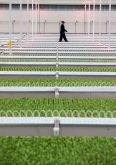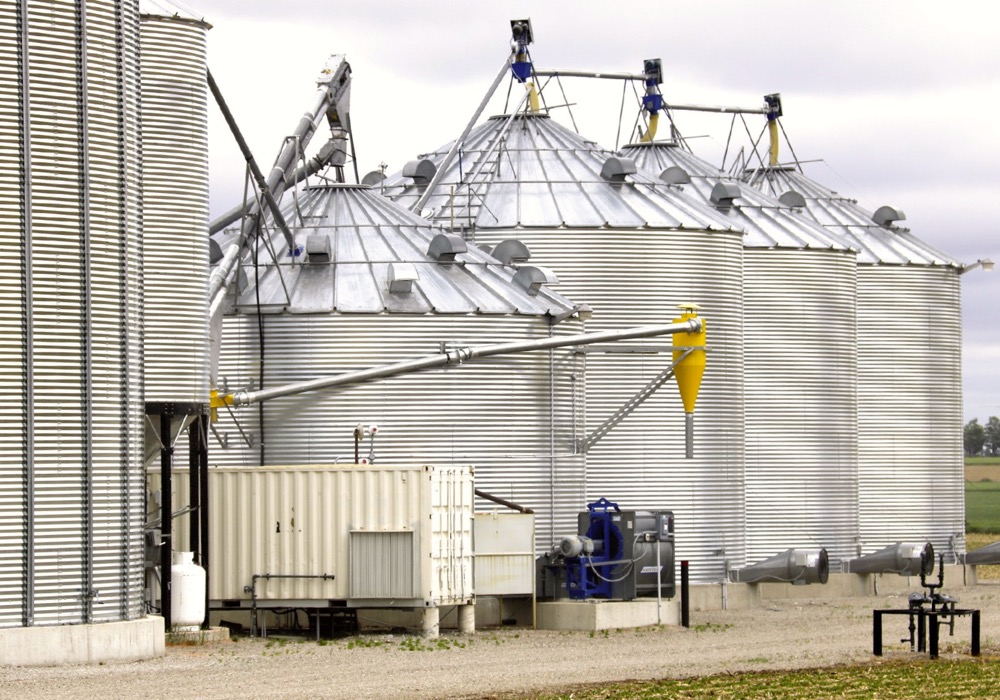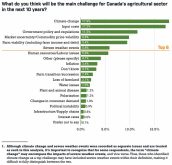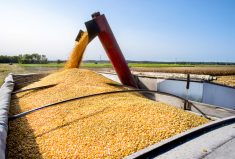Move over sustainability. Regenerative might be the new environmental buzzword for food and agriculture.
At the Innovative Farmers’ Association of Ontario’s annual conference on Feb. 19, farmers, marketers, and soil health experts discussed the concept of “regenerative agriculture” — what it is, who is focusing on it, and how farmers can push beyond sustainable practices.
Why it matters: Regenerative farming is the new buzzword among food-industry giants — as well as farmers increasing profitability by focusing on soil.
What is regenerative agriculture?
Read Also

Claas brings 1000 Series SP forage harvesters to Canada
In mid-August, Claas unveiled its new line of Jaguar forage harvesters at an event in Visalia, California, deep in the heart of that state’s dairy region.
Sustainability is great, but it only brings a holding pattern and cannot fix already degraded environments, says Joel Williams, an Australian plant and soil health educator, consultant, and one of the keynote speakers.
As a concept, regenerative agriculture refers to farming strategies that can fix degraded environments. For Williams and other presenters, that does not include prescriptive qualifications such as those used in organic or other speciality production systems. Indeed, he says regenerative agriculture refers to whatever practices best promote soil health within each unique farm environment.
“Farms sit in a landscape. Make it work by incorporating practices to take advantage of what’s in the landscape. Ecosystems provide a lot of helpful support,” Williams says.
However, there are overarching regenerative principles — all of which relate specifically to soil health. These include reducing tillage as much as possible, finding ways to incorporate wider diversity of crops and cover crops, promoting the soil microbiome, and integrating livestock through rotational grazing, and more.
Through focusing on soil, says Williams, regenerative efforts should benefit both the environment and the farmer through things like longer-term yield stability, and the ability to weather more extreme growing conditions.
“Consumers love trees and hate cattle. Why not put them together and make it work?” says Williams.
“Even a transition from one to two species in a field has enormous impact. There are many practical barriers, but farmers are figuring it out.”
Regeneration in practice
Michael Thompson, a rancher and crop farmer from Kansas, says regenerative agriculture on his farm meant focusing on carbon sequestration, as well as what the local prairie ecosystem would have looked like before the plough.
Originally working depleted soil in a dry mid-west environment, Thompson credits continuous cover and strategic rotational grazing with bringing better water retention, and consequently, drought resilience. He also says that resilience consistently translates to higher per-acre profits, without having to harvest every scrap of plant matter.
“We need to armour the soil […] Basically the profit on your land starts with the soil,” says Thompson. “Every time we get greedy and try to take a little more we [harm] the system.”
He also emphasizes finding the regenerative practices best suited to his farm took years. Not everything worked the first time.
However, he also reiterates the stability of his yields — and lack of soil loss — are a clear indication that soil can be improved with the right approach.
Mike Shuter, a grain farmer from Indiana, also says cover crops and the maintenance of continuous living roots have played a critical role in his family’s mix of organic and conventional production systems. But adopting other strategies to promote microbial activity and the rhizophagy cycle are also important.
This includes trying to incorporate and draw more nutrients into the soil through manures and plant residue, rather than through direct applications of N, P, and K.
“Don’t make soil organisms lazy by feeding them nutrient floods,” says Shuter. “I think we need to work more with the organisms.”
Regenerative concept popular with corporations
Kaytlyn Creutzberg, a Saugeen-area farmer and past Nuffield scholarship winner, also spoke to conference attendees about the adoption of “regenerative” as a mantra for food corporations.
As described by Creutzberg, McCain’s, General Mills, Danone, McDonalds and other food industry giants have all incorporated regenerative concepts as key elements of their own sustainability initiatives. What’s more, they are tying soil health directly to consumer health — and focusing on people’s children — in an effort to drive demand.
“General Mills has a ‘sustainability and social impact officer’ position. It’s not a fad,” she says. “They’re still looking to mitigate disruptions in their own supply chains, particularly in a changing climate. Farmers, and the profits they need, are nearly always missing from these conversations.
“General Mills are considering themselves soil professionals, and I’m not sure we want that.”
This state of affairs affords farmers opportunity as well.
Regenerative farming practices build on what farmers already do, says Creutzberg. With a little effort — in terms of both communication and changes to production — those same farmers could position themselves as prime suppliers for regenerative-minded companies.
Companies like General Mills are also starting to offer programs to help farmers transition to strategies that the company lists as regenerative. She adds this indicates companies are not going to consider “regenerative products” to be premium products, and thus farmers’ likely won’t be paid more. However, now-volunteer transition programs can relieve some of the financial burden of adopting new management strategies.
When asked if she thinks regenerative practices will be mandatory (for farmers to access the markets offered by food companies) Creutzberg says she does not think this will be universally the case — but it will be for some.
“Let’s try to be regenerative and attract buyers in the marketplace,” she says.













